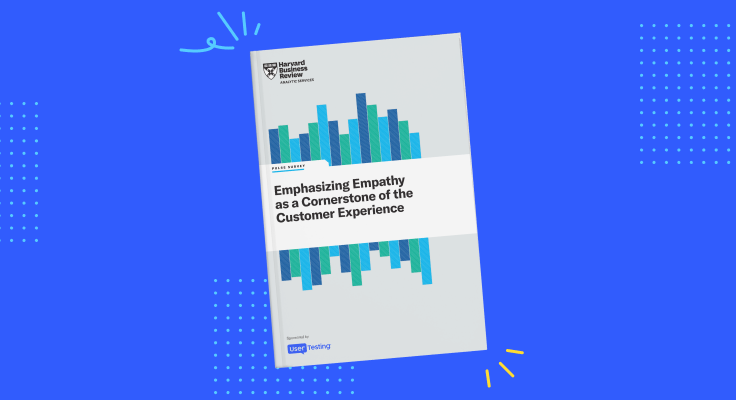
What is user experience?

More and more companies are learning that to stay competitive, they need to invest in user experience, but they don't necessarily know what it means. The good news is, there’s never been a better time to learn about user experience (UX). Whether you want to become a professional UX designer or researcher, or you just want to learn the principles of UX to create better products, designs, and campaigns, we’re here to help you get started.
In this post, we’ll share our thoughts on what UX is, and what the field will look like in the future.
The definition of user experience
The exact definition, as outlined by the International Organization for Standardization, is a “person's perceptions and responses resulting from the use and or anticipated use of a product, system or service.”
Or, more simply, user experience is how you feel about every interaction you have with what's in front of you in the moment you're using it.
There are many facets of your experience, none of which can stand on their own. For example, it’s a common mistake to equate usability to user experience. Usability addresses whether or not you’re able to achieve a task or goals with a product or service. But simply being able to achieve your task of picking up some carrots and paper towels at the grocery store doesn’t give us the whole picture of how you felt about your shopping trip.
There’s a lot to consider if you want to understand the full user experience, and Peter Morville breaks it down beautifully with his UX honeycomb:

Creating a great user experience requires a user to answer these questions:
Can you use it?
One of the most basic requirements of good UX is actually being able to achieve what you’ve set out to do. If you can’t use the product, then the product is useless to you.
Can you find it?
Finding the information you need is also important. Is the navigation menu intuitive? Is the search bar where you thought it should be? If you have to think too much about how to find what you need, the UX is lacking. This also applies to being able to find the product itself—whether by searching online or by other means.
Does it serve a need that you have?
A product can be beautifully designed and easy to use, but if it doesn’t help address a need you have, you’re not going to be interested in it.
Do you want to use it?
If a product’s design is intuitive and a delight to use, you’ll want to use it. And if it’s not? Even the most useful and functional product can provide a poor user experience if it’s a total bore, or the user has no incentive to use it.
Do you find it valuable?
If a product doesn’t provide some sort of value in your life, chances are you won’t use it for long. Does the product save you time or money? Does it help you achieve personal or professional goals? Whatever the benchmark is, a product should add some value to you when you use it.
Do you trust it?
Credibility is huge. If you don’t trust a website, you’re not going to give them your credit card information to make a purchase.
Is it accessible to you?
If you can’t get to your intended destination, you can’t utilize the goods or services offered there. Users with disabilities must be considered to ensure everyone has access to your product.
These elements guide not only the design of a great experience, but how we test, research, and measure them too. And they all need to work in tandem as well. Leave out any one (or more) of these elements, and you’re treading into bad UX territory.
To illustrate this, imagine that you’re purchasing an airline ticket online. The website is beautiful, flights were easy to search, and fares were clearly displayed. You were able to find what you needed easily, and the experience was smooth and pleasant. And then you try to book your flight. The checkout process is clunky and confusing, and when it’s time to put in your payment information, you’re not feeling great about the airline anymore, and you start to question your purchase.
Each aspect of the user experience is important and has its own special characteristics, but they all work together to create a good—or bad—experience.
The difference between user interface and user experience
We can’t talk about UX without mentioning UI, or user interface. The two often get mixed up, or even lumped together as the same discipline.
There’s a great analogy to help explain the differences. Imagine the human body: the bones are the code, the UX is everything internal that makes the body function well, and UI is everything on the outside that makes the body look nice and appealing.
UI is focused on how a product looks and operates. This includes everything from designing the navigational flow of a website, to its visual design. UX however, takes that design and makes sure it resonates with users, based on the elements of the UX honeycomb.
Because the two interact so closely with each other and are often misunderstood, many organizations lose the benefit of having dedicated practitioners in each field—something many UX professionals believe is a necessity for great UX.
The future of UX
The good news is that UX is here to stay. Organizations have started to realize how important their customer’s impressions are of their brands, and they know designing a great experience is the best way to build trust and loyalty. Additionally, as the standards for good UX continue to grow, users are getting used to better experiences and becoming less tolerant of bad ones.
And that means the practice of UX is expanding. Initially, UX was focused on primarily digital experiences but quickly branched out into the physical world as well. You may have also heard the term “customer experience” a lot too, and that’s another layer to consider.
The definition of customer experience
Customer experience, or CX, includes every interaction a person has with an organization or brand. This includes customer service, physical environments, the products themselves, and of course, the digital experiences.
It’s no longer enough to have just a beautifully designed website. If your app and your brick and mortar presence aren’t equally as impressive, your customers will notice.
As a result, organizations are changing the way they think about UX and CX. Progressive companies are starting to integrate UX and CX practices, creating cross-functional teams that include professionals from marketing to sales, and even the executive suite.
Learning more about UX
As the topic of UX is becoming more popular, there are a lot of great resources out there to help you learn more. Whether you’re completely new to UX, or a marketer, or interested in transitioning into a UX researcher role, or you want to get certified, you’ll have plenty of options to help get you started.
The future looks bright for UX. Companies have realized the ROI of UX. Users have begun to expect better experiences and are rewarding the brands that provide them with their business. And talented practitioners are joining the ranks of UX professionals every day.
In this Article

Learn how customer empathy creates great experiences
Learn how customer empathy creates great experiences

